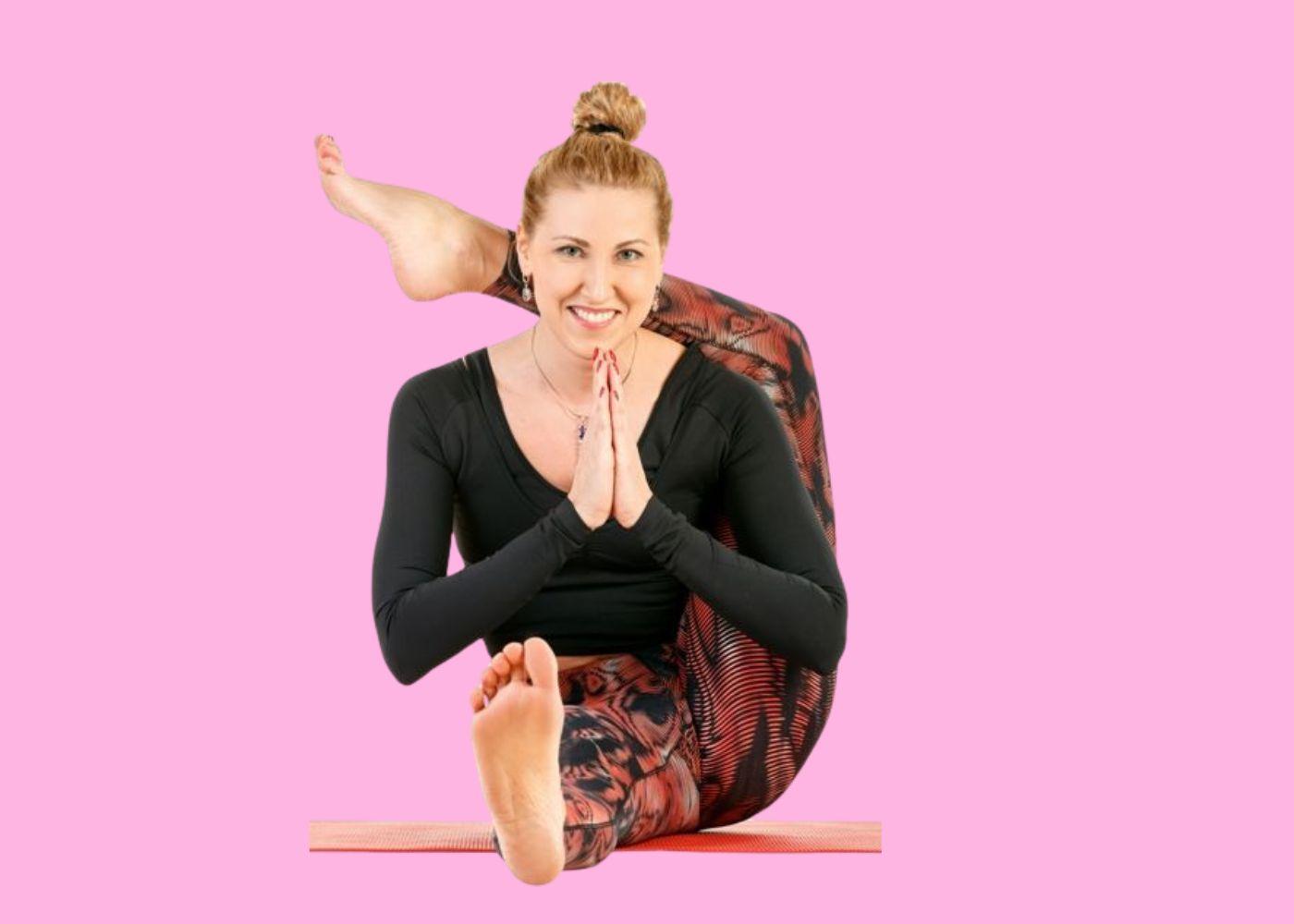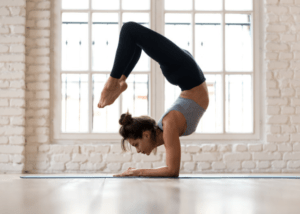One Foot to Head Pose, also known as Eka Pada Sirasana, is a challenging yoga pose that requires strength, flexibility, and balance. This pose, which belongs to the Ashtanga Yoga sequence, is well-known for being difficult and needing mental and physical preparation. We will discuss how to perform Eka Pada Sirasana, its advantages, and the safety measures that must be taken to guarantee a successful and safe practice in this article.
How to Practice Eka Pada Sirasana
1. Warm Up:
- Start with a full warm-up. To prepare your hips, hamstrings, and spine, incorporate positions such as Downward Dog (Adho Mukha Svanasana), Forward Bend (Uttanasana), and Pigeon Pose (Eka Pada Rajakapotasana).
2. Starting Position:
- Sit in Staff Pose, or Dandasana, with your legs straight out in front of you. As in Half Lotus Pose (Ardha Padmasana), bend your right knee and plant the sole of your right foot on your left thigh.
3. Foot Placement:
- Raise your right foot and bring it towards your head with your hands. Your right foot should be behind your head and resting on your upper back. Proceed cautiously as this may need a great deal of hip and hamstring flexibility.
4. Balancing:
- To keep your balance, use your core muscles. Maintain a straight spine and relaxed shoulders.
5. Final Position:
- After you’re steady, you can either maintain your hands on the ground for support or place them in front of your chest in the Anjali Mudra, the position of prayer.
- For a few moments, hold the pose while concentrating on slow, deep breathing.
6. Release:
- To guarantee balanced practice, repeat on the other side. * To release the pose, gently move your foot back to the starting position.
Benefits of Eka Pada Sirasana (One Foot to Head Pose)
1. Improved Flexibility:
- This pose improves general flexibility by deeply stretching the hips, groyne, and hamstrings.
2. Strengthened Core:
- Strong core muscles are necessary to maintain balance in this position, which increases core strength and stability.
3. Enhanced Balance and Coordination:
- The position improves proprioception and body awareness by testing your balance and coordination.
4. Mental Focus:
- Maintaining this stance requires concentration, which can aid with stress reduction and mental focus.
5. Stimulated Internal Organs:
- Internal organ stimulation from the compression of the abdomen can help with cleansing and digestion.
Precautions for Eka Pada Sirasana (One Foot to Head Pose)
1. Warm-Up:
- Make sure you warm up your muscles thoroughly to avoid injury or strain. Never try this stance without being well-prepared.
2. Flexibility:
- If you are not flexible enough, do not press your foot behind your head. The result of overstretching is injury.
3. Knee Safety:
- Watch out for your knees. Stop right away if you feel uncomfortable. If required, use props or alterations.
4. Professional Guidance:
- To guarantee correct posture and technique when doing advanced yoga poses, work with a professional yoga instructor.
5. Health Conditions::
- If you are currently injured, especially in the knees, hips, or spine, stay away from this position. Seek advice from a medical expert if you have any concerns.
Strong yoga stance Eka Pada Sirsasana has many physical and mental advantages. It can greatly improve your strength, flexibility, and focus with regular practice. It is important, therefore, to approach this pose cautiously and with awareness of your body’s limitations. Always pay attention to your body and get expert help when necessary to guarantee a fulfilling and safe yoga practice.
Learn to know more about one foot to head pose so you can join yoga teacher training in rishikesh and 200 hour yoga teacher training in rishikesh and 300 hour yoga teacher training in rishikesh




